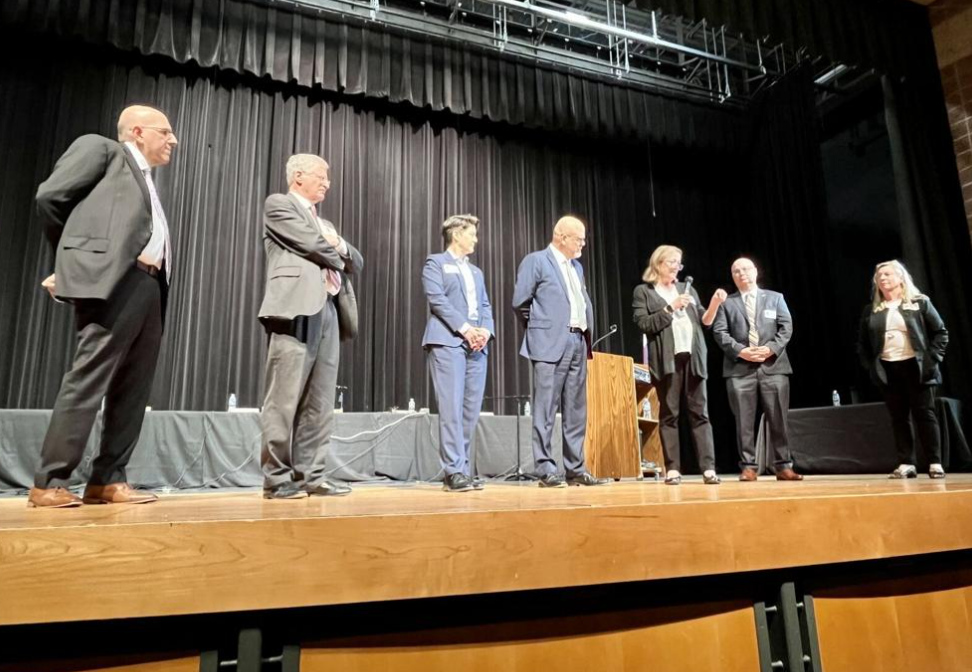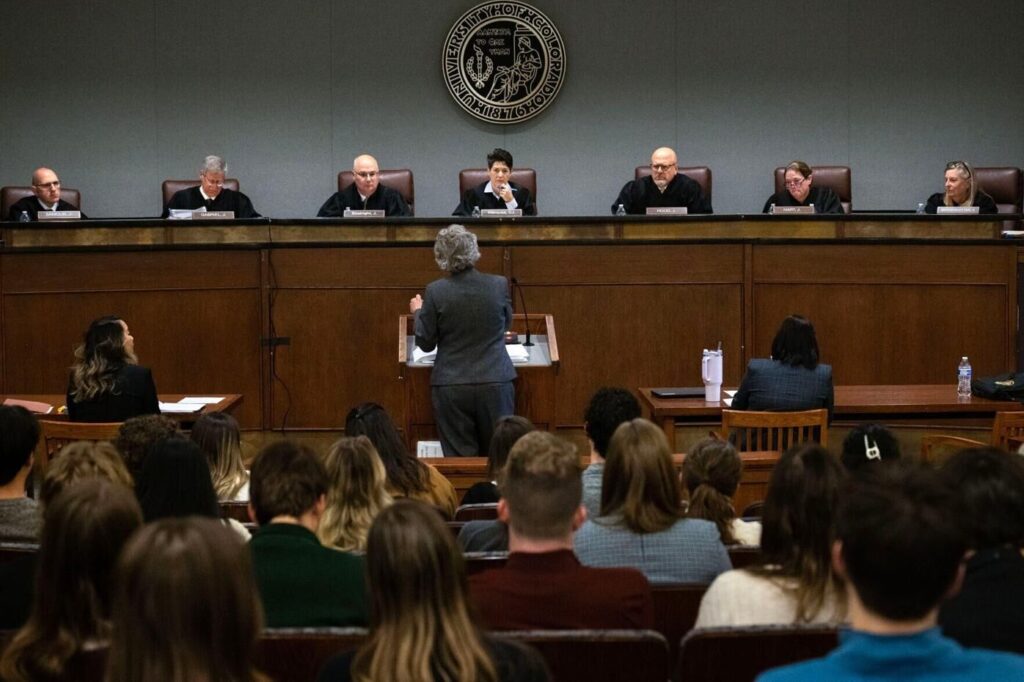TABOR refunds to grow, Colorado budget-writers eye cutting one-time expenditures

While TABOR refunds look set to grow, the most recent quarterly revenue forecast shows a marked contrast in what the Colorado legislature might have to spend versus what they had a year ago.
In fact, the state may already be in a hole, albeit a small one that budget-writers maintain is fixable.
The June forecast released on Tuesday by the General Assembly’s Joint Budget Committee is a kind of report card for budget-writers. It shows how well they did in writing the budget that starts on July 1, plus the latest data on revenue collections, with the first figures from the April 15 tax deadline for individual and corporate income taxes.
The June forecast also gives those budget-writers their first look at what could be available when they start working on the budget in the next legislative session.
TABOR revenue that exceeds what the state’s allowed to spend grew by another $1 billion, making total TABOR refunds to be paid in 2024 about $3.5 billion.
Those figures could see annual refunds for Colorado taxpayers grow from a projected estimated $650 for single filers and roughly $1,300 for joint filers to $850 for single filers and $1,700 for joint filers, depending on voters’ decisions on Proposition HH, the ballot measure that will go before the electorate in November, seeking to provide property tax relief by reducing TABOR refunds in the future.
A companion legislation that equalizes the TABOR refund for all recipients is tied to the ballot measure’s passage.
But, at the same time, budget-writers could be starting off with a hole to dig out of in order to write a balanced budget for the 2024-25 year.
While it’s manageable, they told Colorado Politics, it may mean holding off on spending on controlled maintenance, capital construction projects or other programs paid for with one-time dollars.
Economists with the General Assembly’s legislative council show the JBC two scenarios with every forecast: how much additional revenue they might have for the upcoming budget planning and another scenario that incorporates upcoming obligations, such as inflationary increases; rising caseload for Medicaid and K-12 (and potentially prisons); increases in provider rates (for Medicaid, state hospitals and prisons); ongoing capital construction and controlled maintenance obligations; increases in employee compensation; and, maintaining the state’s required 15% statutory reserve at that level.
A year ago, the second scenario showed a pretty rosy forecast: $321.8 million above all those obligations that could be used for new programs or other initiatives.
With inflation still running at about 8% in 2022, that available revenue dwindled by September to $85.1 million, and by December it was gone, with an estimate the state would be short about $57.7 million to meet all obligations and cover inflationary increases.
That December forecast is what the JBC had to rely on as they headed into figure setting for the 2023-24 budget that goes into effect on July 1.
Lawmakers responded in the 2023 session with some belt-tightening and no major initiatives, at least in terms of cost, that would affect the 2023-24 budget.
A hole
Fast forward to Tuesday and the revenue forecast shows the state may already be in a hole.
While corporate income tax revenue is soaring, it’s a much smaller piece of the general fund pot that lawmakers rely on.
The bigger piece – individual income tax revenue – slipped downward by about $1 billion, the legislative council economists said. Those lower revenue numbers are compounded by a November 2022 ballot measure that reduced the state income tax rate from 4.55% to 4.4%.
There are significant differences in state obligations that will have to be covered in the 2024-25 budget versus 2023-24. Topping that list is state employee compensation, which will cost the state an additional $224 million in 2024-25, the forecast numbers said.
That increase in 2023-24 was $98 million.
The JBC also won approval for a more substantial bump in health care community provider rates in the 2023-24 budget. That will drive an increased cost of $127 million, more than twice than was forecasted a year ago.
At the same time, TABOR refunds show no signs of slowing. The revenue that exceeds the TABOR revenue cap for 2023-24 – and paid out in the following budget year – will be just above $3 billion. That’s even with a substantial increase in the state’s revenue cap tied to the 8% inflation of 2022 and population growth of about 0.5%, economists noted.

marianne.goodland@coloradopolitics.com
Economists continue to watch and worry about a potential recession, which they said is significant, but not quite as big a worry as a year ago – thanks to the negotiations over the debt ceiling by Congress and a recent decision by the Federal Reserve to hold off, for now, another interest rate increase.
Cautious
JBC members are cautious about what their future budgets will look like.
“We did a pretty good job of staying within our means,” said JBC Chair Sen. Rachel Zenzinger, D-Arvada. “Our cautiousness paid off.”
But it will be more difficult in the future, she added.
They do have options, JBC members said.
“We have been taking steps to avoid a structural deficit” and what gets covered with one-time dollars, Zenzinger said.
It would have been catastrophic if the JBC had not been taking steps during the last two or three budget cycles to address that potential deficit, and that bill will eventually become due, she said.
Zenzinger said there is still some risk if the state doesn’t see enough revenue growth, as there are still obligations being covered by one-time money that will eventually need to be covered by general fund dollars. Most of the deficit, however, was avoided by just not spending so much, she said, adding that’s also part of a careful conversation the JBC has with the rest of the General Assembly.
The problem they’re dealing with is that, despite modest wage growth, which would contribute to overall revenue growth, costs are not coming down and the state is still experiencing higher inflation than the rest of the country, and that will be a concern for the upcoming budget work in the 2024 session, she said.
“We’ll be starting in the hole,” she said.
Sen. Barbara Kirkmeyer, R-Brighton, disagreed.
There are one-time costs that can be reduced to avoid starting off in a hold, such as not funding capital construction, controlled maintenance or capital information technology projects at the levels estimated in the revenue forecasts, she said.
“It’s just about prioritizing,” she said. “Prioritize those services you absolutely have to serve and need to serve.”
And make adjustments elsewhere, she said.
There were programs beefed up in the last budget, including one-time expenditures, she said.
“The fact that the governor was trying to budget to a structural deficit was unreal. I don’t know why anyone would do that. We never considered it as a JBC,” she said, adding it’s “about good government policy” to match available revenue to services and not the other way around, which could require raising revenue to match the services a government might want to provide.
Tuesday’s forecast confirms that lawmakers need to be thoughtful about how the state spending grows – or even if it grows – next year, said JBC Vice-chair Rep. Shannon Bird, D-Westminster.
That means investing in the things lawmakers promised to the taxpayers, such as early childhood education, state-paid full-day kindergarten or behavioral health, she said.
“We want to do all of those things well and live up to the aspirations” for these new areas of government, she said, adding she’s committed to doing those things well before investing in new programs.














